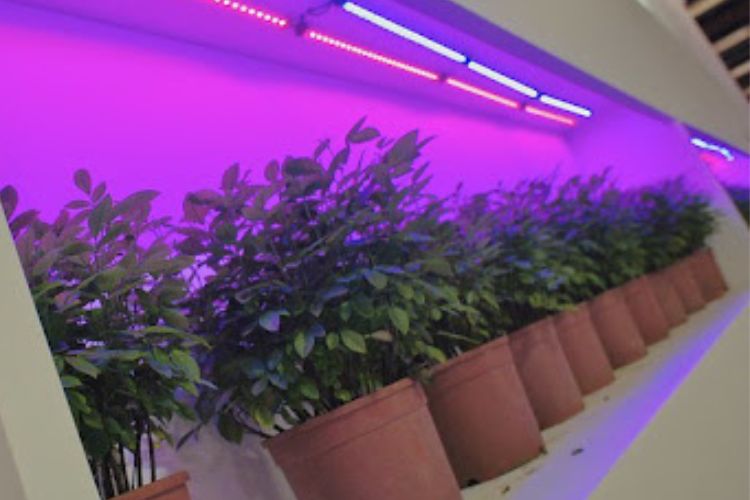Sign up for our newsletter
Get Swipe Garden's independent reviews, and expert advice sent straight to your inbox.
For information privacy practices, read our Privacy Policy.
Sign up for our newsletter
Get Swipe Garden's independent reviews, and expert advice sent straight to your inbox.
For information privacy practices, read our Privacy Policy.
Sign up for our newsletter
Get Swipe Garden's independent reviews, and expert advice sent straight to your inbox.
For information privacy practices, please read our Privacy Policy.

Which should I choose between purple vs white grow light? Choosing the right one is crucial for your plants’ optimal development and health in indoor gardening and hydroponic systems. Understanding the difference between the two can help ensure your indoor gardening endeavors are successful.
This article will explore the benefits and considerations of these colors. From there, it helps you determine the best for your garden. Let’s compare them!
These lights are commonly used in indoor gardening and hydroponic systems to provide the necessary lighting source for plant development. Purple lights, also known as LEDs, emit blue and red wavelengths essential for photosynthesis. On the other hand, the latter provides a full spectrum that resembles natural sunlight.
So which one is better? We will elaborate in the following sections!
Without waiting any longer, let’s dive into this detailed comparison!
As mentioned, purple lighting sources emit red and blue wavelengths in combination. These specific wavelengths are vital for photosynthesis. White LED grow light to provide a full spectrum that closely resembles natural sunlight. They cover broad wavelengths, including red, blue, green, and yellow light spectrum, providing balanced and comprehensive lighting.
These lighting sources have different effects on plant development stages. The purple option is especially beneficial in the early stages. The red light component promotes root development and flowering, while the blue light stimulates vegetative and leaf formation. Meanwhile, white lighting sources benefit in all stages. But its effectiveness in the vegetative and flowering stages is not as good as its competitors. Instead, it is more efficient in the seeding phase.
During photosynthesis, indoor plants under white lights may have a lower efficiency. The reason is that these grow lights don’t provide the same optimal lighting as the others. Besides, studies have shown that plants grown under LPSs (emit a narrow spectrum) grow faster than those grown under broad-spectrum bulbs. In addition, plants grown only under white LED grow lights may exhibit lower pigment levels. This problem can affect the crop’s health and its product. In contrast, LED grow light provides more suitable lighting to promote chlorophyll synthesis.
These colors are now energy-saving options compared to traditional lighting sources. But the question is: Which is more energy efficient?
Purple grow light tends to be more energy efficient. The reason is that they can provide the suitable spectrum that plants need for photosynthesis without wasting energy on unnecessary wavelengths. LEDs can optimize energy consumption and minimize energy waste by targeting specific wavelengths required. On the other hand, white light often provides a broader spectrum that includes a wide range of wavelengths. While this can result in a more natural lighting experience, it can also result in slightly lower energy efficiency.
Generally, LED lights tend to be cheaper. The reason is that their spectrum is more concentrated, making them easier to produce and fabricate. However, it’s important to note that cost comparisons can vary based on factors like the type of grow lights, brand, and size. Different manufacturers may offer different prices, so certain specialized or high-quality lights may cost more than others.
In addition, cost considerations should not be based solely on the initial purchase price. Instead, note factors such as energy efficiency, lifespan, and performance when evaluating the overall cost.
| Features | Purple Light | White Light |
| Spectrum | Emit red and blue wavelengths | Full spectrum |
| Plant Growth Stages | Vegetative and flowering stages | Seeding |
| Creating Green | Better | Worse |
| Energy Efficiency | More | Less |
| Cost | Lower | Higher |
Purple light, with a focused spectrum of red and blue wavelengths, is specifically designed to meet the needs of plants during critical development stages. They promote vegetative, flowering, and fruiting, making them ideal for some specific crops and goals.
White light, otherwise, offers a flexible solution that supports plants throughout their life cycle, from seedling to adulthood. In addition, they are suitable for a wide range of crops and can be particularly advantageous for maintaining crop health in large-scale operations.
Ultimately, you should research and consider your plant’s needs and consult with experts or experienced growers to know the best option.
In summary, when deciding between purple vs white grow light for your garden, it is essential to consider your specific needs and goals. Then, you can create an optimal environment to nourish your plants and lead to successful indoor gardening endeavors. Stay tuned for our latest articles for more knowledge about your indoor garden!
FAQs
<strong>Do plants grow better in color lighting sources?</strong>
Yes. Different wavelengths have varying effects on plant development. For example, red and blue lighting sources are crucial for photosynthesis and promoting vegetative and flowering, while green is less effective for plant growth.
<strong>What are the benefits of purple lighting?</strong>
It provides the essential spectrum for photosynthesis, promotes healthy vegetative, stimulates flowering and fruiting, and can enhance overall plant productivity in indoor gardening or hydroponic systems.
<strong>What color light is best for the indoor garden?</strong>
It is blue light. It helps plants make chlorophyll. Also, this color helps to encourage root growth and germination in young plants.
Related posts: